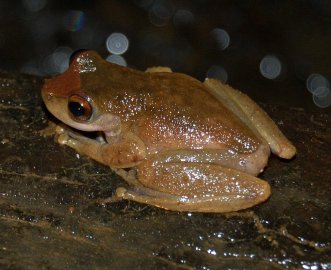Facts About Common mist frog
The Common Mist Frog is an enchanting tree frog native to northeastern Queensland, Australia. It is moderately sized, reaching up to about 3.8 cm in length, and can be easily identified by its elongated limbs, webbed feet, and large toe pads.
These frogs inhabit the riparian zones of fast-flowing streams within the rainforests and wet sclerophyll forests of eastern tropical North Queensland. The males are notable for their vocalizations, which they use to attract mates. Breeding occurs year-round, with peak activity from November to March. The frogs lay their eggs under rocks near streams, and their tadpoles are specially adapted to thrive in rapid water conditions.
Unfortunately, populations of the Common Mist Frog have drastically declined, particularly at elevations above 400 meters, with several populations disappearing entirely. This decline began in 1989 south of the Daintree River and extended to the highlands north of the river by 1993. Due to these significant declines, the Common Mist Frog is now classified as Endangered on the IUCN Red List and under Queensland's Nature Conservation Act 1992.
